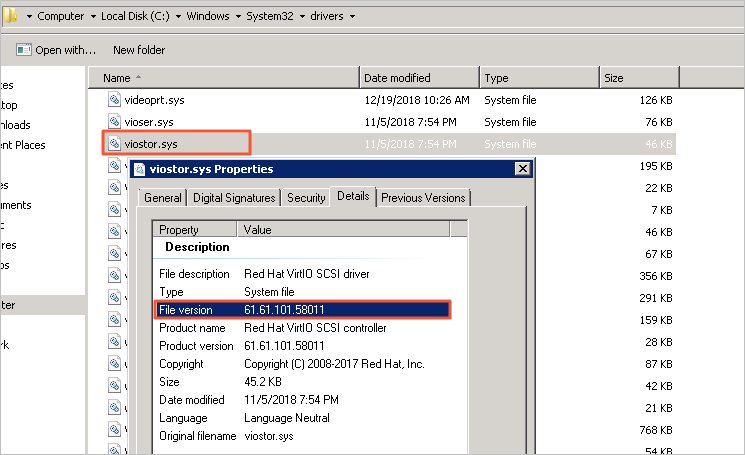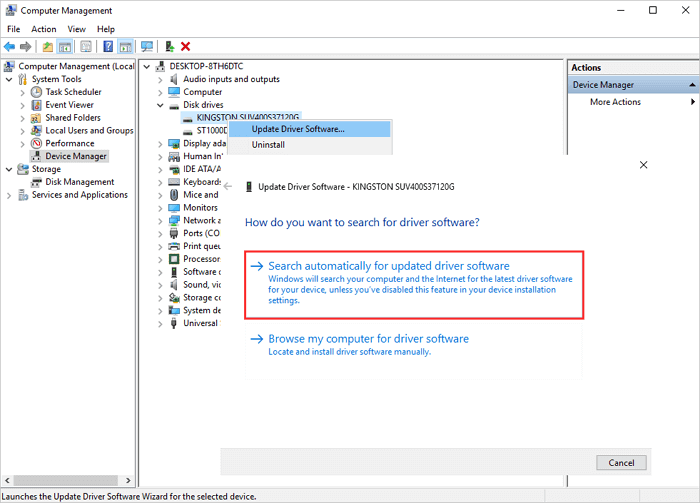- H H Software Scsi & Raid Devices Driver Download For Windows 8.1
- H H Software Scsi Usb
- H H Software Scsi Updater
- H H Software Scsi Login

Name
lsscsi - list SCSI devices (or hosts) and their attributes. This program is free software; you can redistribute it and/or. # ifndef QLATARGETH: 29. #define OFSSTS BIT15 /. Send SCSI status./ 104. /. SCSI general interface description. Largely written by Julian Elischer (julian@tfs.com). for TRW Financial Systems. TRW Financial Systems, in accordance with their agreement with Carnegie. Mellon University, makes this software available to CMU to distribute. or use in any manner that they see fit as long as this message is kept with. the software.
Synopsis
lsscsi [--classic] [ --device] [--generic] [--help][--hosts] [--kname] [--list] [--long] [--protection] [--sysfsroot=PATH] [--transport] [--verbose][--version] [H:C:T:L]
--device] [--generic] [--help][--hosts] [--kname] [--list] [--long] [--protection] [--sysfsroot=PATH] [--transport] [--verbose][--version] [H:C:T:L]Description
Uses information in sysfs (linux kernel series 2.6 and later) to list scsi devices (or hosts) currently attached to the system. Options can be used tocontrol the amount and form of information provided for each device.
If a H:C:T:L argument is given then it acts as a filter and only devices that match it are listed. The colons don't have to be present, and '-', '*','?' or missing arguments at the end are interpreted as wildcards. '-' needs to stand alone or else it is taken as the beginning of an option (e.g. '-:-:-:-' isillegal). '*' needs to be escaped from the shell. A leading '[' and trailing ']' are permitted (e.g. '[1:0:0]' matches all luns on 1:0:0). May also be used tofilter --hosts in which case only the H is active and may be either a number or in the form 'host<n>' where <n> is a host number.
By default in this utility device node names (e.g. '/dev/sda' or '/dev/root_disk') are obtained by noting the major and minor numbers for the listed deviceobtained from sysfs (e.g. the contents of '/sys/block/sda/dev') and then looking for a match in the '/dev' directory. This 'match by major and minor' willallow devices that have been given a different name by udev (for example) to be correctly reported by this utility.
In some situations it may be useful to see the device node name that linux would produce by default, so the --kname option is provided. An example ofwhere this may be useful is kernel error logs which tend to report disk error messages using the disk's default kernel name.
Information about this utility including examples can also be found at: http://sg.danny.cz/scsi/lsscsi.html .
Options
- -d, --device
- After outputting the (probable) scsi device name the device node major and minor numbers are shown in brackets (e.g. '/dev/sda[8:0]').
- -g, --generic
- Output the scsi generic device file name. Note that if the sg driver is a module it may need to be loaded otherwise '-' may appear.
- -h, --help
- Output the usage message and exit.
- -H, --hosts
- List the SCSI hosts currently attached to the system. If this option is not given then SCSI devices are listed.
- -k, --kname
- Use linux default algorithm for naming devices (e.g. block major 8, minor 0 is '/dev/sda') rather than the 'match by major and minor' in the '/dev'directory as discussed above.
- -L, --list
- Output additional information in <attribute_name>=<value> pairs, one pair per line preceded by two spaces. This option has the same effect as'-lll'
- -l, --long
- Output additional information for each SCSI device (host). Can be used multiple times for more output in which case the shorter option form is moreconvenient (e.g. '-lll'). When used three times (i.e. '-lll') outputs SCSI device (host) attributes one per line; preceded by two spaces; in the form'<attribute_name>=<value>'.
- -p, --protection
- Output additional data integrity (protection) information.
- -t, --transport
- Output transport information. This will be a target related information or, if --hosts is given, initiator related information. When used without--list, a name or identifier (or both) are output on a single line, usually prefixed by the type of transport. For devices this information replaces thenormal vendor, product and revision strings. When the --list option is also given then additionally multiple lines of attribute_name=value pairs areouput, each indented by two spaces. See the section on transports below.
- -v, --verbose
- outputs directory names where information is found. Use multiple times for more output.
- -V, --version
- outputs version information then exits.
- -y, --sysfsroot=PATH
- assumes sysfs is mounted at PATH instead of the default '/sys' . If this option is given PATH should be an absolute path (i.e. start with '/').
Notes
Information for this command is derived from the sysfs file system, which is assumed to be mounted at/sys unless specified otherwise by the user. SCSI (pseudo) devices that have been detected by the SCSI mid level will be listed even if the required upperlevel drivers (i.e. sd, sr, st, osst or ch) have not been loaded. If the appropriate upper level driver has not been loaded then the device file name willappear as '-' rather than something like '/dev/st0'. Note that some devices (e.g. scanners and medium changers) do not have a primary upper level driver andcan only be accessed via a scsi generic (sg) device name.lsscsi version 0.21 or later is required to correctly display SCSI devices in linux kernel 2.6.26 (and possibly later) when the CONFIG_SYSFS_DEPRECATED_V2kernel option is not defined.
Transports
This utility lists SCSI devices which are known as logical units (lu) in the SCSIArchitecture Model (ref: SAM-4 at http://www.t10.org) or hosts when the --hosts option is given. A host is called an initiator in SAM-4. A SCSI commandtravels out via an initiator, across some transport to a target and then onwards to a logical unit. A target device may contain several logical units. A targetdevice has one or more ports that can be viewed as transport end points. Each FC and SAS disk is a single target that has two ports and contains one logicalunit. If both target ports on a FC or SAS disk are connected and visible to a machine, then lsscsi will show two entries. Initiators (i.e. hosts) also have oneor more ports and some HBAs in Linux have a host entry per initiator port while others have a host entry per initiator device.When the --transport option is given for devices (i.e. --hosts not given) then most of the information produced by lsscsi is associated withthe target, or more precisely: the target port, through which SCSI commands pass that access a logical unit.
Typically this utility provides one line of output per 'device' or host. Significantly more information can be obtained by adding the --list option.When used together with the --transport option, after the summary line, multiple lines of transport specific information in the form'<attribute_name>=<value>' are output, each indented by two spaces. Using a filter argument will reduce the volume of output if a lot of devices orhosts are present.
The transports that are currently recognized are: IEEE 1394, ATA, FC, iSCSI, SAS, SATA, SPI and USB.
For IEEE 1394 (a.k.a. Firewire and 'SBP' when storage is involved), the EUI-64 based target port name is output when --transport is given, in theabsence of the --hosts option. When the --hosts option is given then the EUI-64 initiator port name is output. Output on the summary linespecific to the IEEE 1394 transport is prefixed by 'sbp:'.
to detect ATA and SATA a crude check is performed on the driver name (after the checks for other transports are exhausted). Based on the driver name eitherATA or SATA transport type is chosen. Output on the summary line is either 'ata:' or 'sata:'. No other attributes are given. Most device and hosts flagged as'ata:' will use the parallel ATA transport (PATA).
For Fibre Channel (FC) the port name and port identifier are output when --transport is given. In the absence of the --hosts option these idswill be for the target port associated with the device (logical unit) being listed. When the --hosts option is given then the ids are for the initiatorport used by the host. Output on the summary line specific to the FC transport is prefixed by 'fc:'.
For iSCSI the target port name is output when --transport is given, in the absence of the --hosts option. This is made up of the iSCSI nameand the target portal group tag. Since the iSCSI name starts with 'iqn' no further prefix is used. When the --hosts option is given then only 'iscsi:'is output on the summary line.
For Serial Attached SCSI the SAS address of the target port (or initiator port if --hosts option is also given) is output. This will be a naa-5address. For SAS HBAs and SAS targets (such as SAS disks and tape drives) the SAS address will be world wide unique. For SATA disks attached to a SAS expander,the expander provides the SAS address by adding a non zero value to its (i.e. the expander's) SAS address (e.g. expander_sas_address + phy_id + 1). SATA disksdirectly attached to SAS HBAs seem to have an indeterminate SAS address. Output on the summary line specific to the SAS transport is prefixed by 'sas:'.
For the SCSI Parallel Interface (SPI) the target port identifier (usually a number between 0 and 15 inclusive) is output when --transport is given,in the absence of the --hosts option. When the --hosts option is given then only 'spi:' is output on the summary line.
When a USB transport is detected, the summary line will contain 'usb:' followed by a USB device name. The USB device name has the form'<b>-<p1>[.<p2>[.<p3>]]:<c>.<i>' where <b> is the USB bus number, <p1> is the port on the host. <p2> is aport on a host connected hub, if present. If needed <p3> is a USB hub port closer to the USB storage device. <c> refers to the configuration numberwhile <i> is the interface number. There is a separate SCSI host for each USB (SCSI) target. A USB SCSI target may contain multiple logical units. Thusthe same 'usb: <device_name>' string appears for a USB SCSI host and all logical units that belong to the USB SCSI target associated with that USB SCSIhost.
H H Software Scsi & Raid Devices Driver Download For Windows 8.1
Author
H H Software Scsi Usb
Written by Doug GilbertReporting Bugs
Report bugs to <dgilbert at interlog dot com>.Copyright
Copyright © 2003-2009 Douglas GilbertH H Software Scsi Updater
This software is distributed under the GPL version 2. There is NO warranty; not even for MERCHANTABILITY or FITNESS FOR A PARTICULAR PURPOSE.H H Software Scsi Login
See Also
lspci lsusb